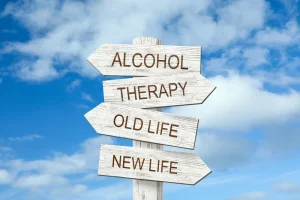
Abstinence tasks also require practicing self-control, which might increase capacity for self-control strength (Muraven & Baumeister, 2000), and successful abstinence attempts might increase abstinence/avoidance self-efficacy (e.g., Hodgins, Peden, & Makarchuk, 2004; Kraus, Rosenberg, Martino, Nich, & Potenza, 2017). All in all, short-term abstinence as a temporary intervention need not be conflated with long-term abstinence as an indefinite treatment goal and can be regarded as a separate intervention. Along with the client, the therapist needs to explore past circumstances and triggers of relapse. Also, abstinence violation effect the client is asked to keep a current record where s/he can self-monitor thoughts, emotions or behaviours prior to a binge. One is to help clients identify warning signs such as on-going stress, seemingly irrelevant decisions and significant positive outcome expectancies with the substance so that they can avoid the high-risk situation. The second is assessing coping skills of the client and imparting general skills such as relaxation, meditation or positive self-talk or dealing with the situation using drink refusal skills in social contexts when under peer pressure through assertive communication6.
Inflammatory markers and negative mood symptoms following exercise withdrawal

Support for her work has been provided by the National Institute on Alcohol Abuse and Alcoholism and the University of Washington’s Alcohol and Drug Abuse Institute. One day, when he was faced with a stressful situation, he felt overwhelmed, gave in to the urge, and had a drink. I have lost all that time,” which can trigger a self-destructive mindset and potentially lead to further relapse.
Social Media+ Society
- For example, clients can be encouraged to increase their engagement in rewarding or stress-reducing activities into their daily routine.
- The limit violation effect describes what happens when these individuals fail to restrict their use within their predetermined limits and the subsequent effects of this failure.
- Abstinence as a temporary intervention, on the other hand, has not received as much attention within the empirical literature.
- The focus is on identifying and accepting the urge, not acting on the urge or attempting to fight it4.
- Individuals who experience an intense AVE go through a motivation crisis that affects their commitment to abstinence goals30,31.
- The term relapse may be used to describe a prolonged return to substance use, whereas lapsemay be used to describe discrete, circumscribed…
- Consequently, it may be possible that abstinence on its own, when it is not part of an intervention that teaches effective coping skills for dealing with withdrawal, cravings, or lapses, might cause more harm than good.
Indeed, this argument has been central to advocacy around harm reduction interventions for people who inject drugs, such as SSPs and safe injection facilities (Barry et al., 2019; Kulikowski & Linder, 2018). It has also been used to advocate for managed alcohol and housing first programs, which represent a harm reduction approach to high-risk drinking among people with severe AUD (Collins et al., 2012; Ivsins et al., 2019). The results of the Sobell’s studies challenged the prevailing understanding of abstinence as the only acceptable outcome for SUD treatment and raised a number of conceptual and methodological issues (e.g., the Sobell’s liberal definition of controlled drinking; see McCrady, 1985). A “controlled drinking controversy” followed, in which the Sobells as well as those who supported them were publicly criticized due to their claims about controlled drinking, and the validity of their research called into question (Blume, 2012; Pendery, Maltzman, & West, 1982). Despite the intense controversy, the Sobell’s high-profile research paved the way for additional studies of nonabstinence treatment for AUD in the 1980s and later (Blume, 2012; Sobell & Sobell, 1995).
Reactivity to written mental arithmetic: Effects of exercise lay-off and habituation

In particular, given recent theoretical revisions to the RP model, as well as the tendency for diffuse application of RP principles across different treatment modalities, there is an ongoing need to evaluate and characterize specific theoretical mechanisms of treatment effects. The last decade has seen numerous developments in the RP literature, including the publication of Relapse Prevention, Second Edition [29] and its companion text, Assessment of Addictive Behaviors, Second Edition [30]. The following sections provide an overview of major theoretical, empirical and applied advances related to RP over the last decade. (a) When restrained eaters’ diets were broken by consumption of a high-calorie milkshake preload, they subsequently show disinhibited eating (e.g. increased grams of ice-cream consumed) compared to control subjects and restrained eaters who did not drink the milkshake (figure based on data from [30]). (b) Restrained eaters whose diets were broken by a milkshake preload showed increased activity in the nucleus accumbens (NAcc) compared to restrained eaters who did not consume the preload and satiated non-dieters [64]. Another example is Taylor, who has been doing a wonderful job taking walks and engaging in healthier eating.

Withdrawal and tolerance phenomenon in problem gambling
Outcome Studies for Relapse Prevention
- There may be an internal conflict between resisting thoughts about drugs and compulsions to use them.
- A basic assumption is that relapse events are immediately preceded by a high-risk situation, broadly defined as any context that confers vulnerability for engaging in the target behavior.
